“An early and pivotal piece of architecture on Oakland Avenue helping sell the area as a new bonton neighborhood.”
City Directories and History: 1906 – 1908 – J. M. Cherry, Mrs. Ella Cherry, Ms. Annie M. Cherry, Allie B. Cherry, Mr. Lee Cauthen, 1913 – James S. Beaty M.D. and wife Anna M., 1917 – J.M. Cherry, 1936 – Headen A. Bynum (Williams – Bynum Cotton Brokers and Buyers @N. Trade and Oakland Ave.), 1946 – Headen A. Bynum, 1963 – Mrs. Alice C. Bynum, 2014 – Hayes and Guyton Attorney
Historically, the Cherry family had resided at #402 Elm Street in downtown prior to moving to this location. “On the opposite side of Elm-Avenue from “High View” was a large cottage typical of the 1880’s (this was on the- southwest corner of Elm and Moore), which was the home of Mr. James M. Cherry from about 1885 to 1893. He was one of the town’s wisest and wealthiest businessmen; involved in every new development in Rock Hill. He bought the land and opened Cherry Road to the public — looking to the day when there would be a modern bridge over the Catawba River at the place where Cherry Road ended at the river bank. Cora Rogers, first cousin of Mr. Cherry, was married to John A. Black, grandson of Alexander Templeton Black, in this house.” [Robbins – White Tour Booklet]
“In 1872 James M. Cherry arrived (began working) as a young clerk for L. M. Davis’s store….” He was born near Harmony Baptist Church in Chester County and came to Rock Hill in 1857, when he was only fourteen years old. He clerked for Captain L. M. Davis and later was employed by J. M. Ivy as bookkeeper and cashier. In 1880 he and others organized the young Men’s Loan and Trust Company, of which David Hutchison was president and he was secretary. This was but one of his numerous business ventures of an original nature. He shared in the founding of the Savings Bank, and he and John G. Anderson organized the Catawba Real Estate
Company and the first Telephone Company. He was also involved in success of the Rock Hill Buggy Company; he helped organize the Electric Light and Power Company, a newspaper, and the Land and Town Site Company. In fact, there were few business ventures of this period in which he did not have a share. Cherry Park is named for him, as is Cherry Road, which he had graded at his own expense and presented to York County. Until his death he was one of the town’s foremost businessmen.(Information from: The City Without Cobwebs – Douglas S. Brown, 1953)
The lovely Queen Anne style home on Oakland Avenue, was built by J.M. Cherry along the new development section known as Oakland Avenue was one of the earliest homes along that section. Built in 1897 by local contractor A.D. Holler, the house served three generations of the Cherry-Bynum family and was only razed in the early 1970’s to make room for commercial development.
James Milton Cherry (1856-1920) was an early mayor, longtime city councilman, businessman, real estate developer, and agriculturalist who helped guide the development of Rock Hill for decades and had his business interests in nearly every facet of Rock Hill’s development owning hundreds of acres and numerous businesses.
Recent research by Historic Rock Hill has uncovered an interesting connection between Rock Hill and a nationally known landscape designer of the late nineteenth century. The Oakland development, launched in 1891, represented perhaps the single greatest expansion of the city in its history. Developed by the Rock Hill Land and Town Site Company, Oakland was a “streetcar suburb,” a trend evident in many larger cities during this period. The Company was organized with a capital of $100,000 by local business leaders William Blackburn Wilson, II, R. T. Fewell, Capt. William Lyle Roddey, J. M. Cherry, and John J. Hemphill. They soon began development of the 1,300-lot development, which would transform the city.
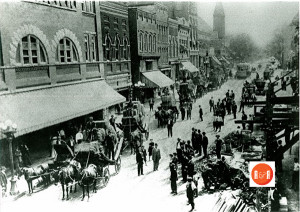
Images of the Cherry family enterprises in Rock Hill including the extensive farm operations of the family along what would become Cherry Road. Courtesy of the Cherry – Beaty Family Collection, AFLLC.
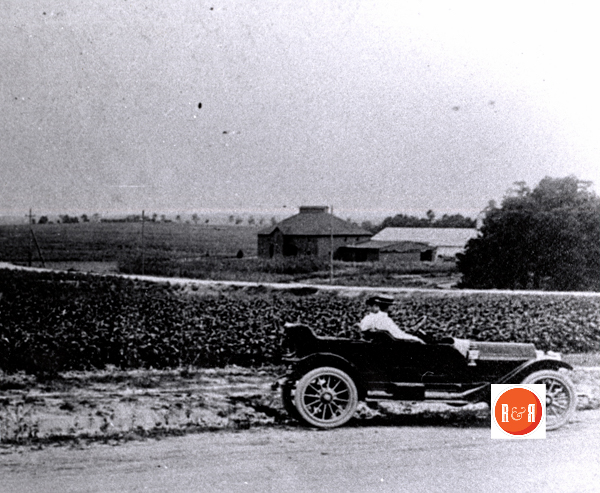
The RH Record reported on March 19, 1908 contained an article describing a visit of Mr. Grist of the Yorkville Enquirer to Rock Hill. He drove to J.M. Cherry’s land. Mr. Cherry has a big two story cattle barn about 50 yards from the road to the river. Mr. Cherry owns all the land from Rock Hill to the river, a distance of about four miles. He bought most of it for $50. an acre. The improvements have been planting thousands of fruit trees, clearing hundreds of acres, pulling up stumps, and grading roads. J. M. Cherry was a delegate to the Democratic National Convention in Denver in the summer of 1908. One of the things that impressed him most was seeing large fields of high-grade alfalfa. Alfalfa, called by some “green manure,” had an almost magical capability of transforming red clay land worn out by cotton and com into highly productive soil. – Louise Pettus

At the heart of the development were Oakland Avenue, connecting the area with downtown Rock Hill via a street car line, and Oakland Park, a 30-acre public space. Oakland Park was located where the Winthrop University main campus is today. Many street car suburbs across the nation featured beautiful public parks as an enhancement to the sale of lots.
Oakland Park was designed by Joseph Forsyth Johnson, a nationally known landscape designer. The development of planned urban parks in the United States was pioneered by Frederick Law Olmsted several decades earlier with New York’s Central Park. Olmsted and his family members continued their practice for many years, working in cities around the nation. The development of parks in the South was delayed by the destruction of the Civil War and the ensuing period of upheaval and poverty. By the 1880s, major southern cities began to grow rapidly, and the development of street car suburbs in southern cities led to creation of major parks. Joseph Forsyth Johnson was one of the men who helped to design these parks.
Johnson (1840-1906) was born in England. His family background included men who were well-known botanists. His maternal grandfather, John Forsyth, was a London florist. John’s father was William Forsyth (1737-1804), a Scot who was born in Aberdeen and became gardener at Syon Park in West London, then superintendent of the Chelsea Physic Garden in 1771. In 1784, he was appointed superintendent of gardens at St. James and Kensington Palaces. Forsyth was one of the founders of the Royal Horticultural Society in 1804, shortly before his death. Most American yards have a forsythia bush, or yellow bell, which blooms in the early spring. This genus was named for William Forsyth.

J.M. Cherry farmed on a massive scale in York County and was heavily involved in all aspects of Rock Hill’s development and industrialization. Images courtesy of the Cherry – Beaty Family Collection – AFLLC

Joseph Forsyth Johnson followed in his great-grandfather’s tradition. As a young man, he designed grounds for estates in England, Ireland, and Russia. By 1869, he had become curator of the Royal Botanic Gardens in Belfast, Ireland. He also opened a gardening shop on Bond Street in London. In 1885, Johnson came to the United States and was employed by Prospect Park in Brooklyn, New York. Two years later, he came to the South, where he worked on parks in several street car suburbs. In Atlanta, he worked with developer Joel Hurt on designs for Inman Park and Piedmont Park. In 1891, he was in Charlotte, where he designed the new Latta Park.
It was during this period that Johnson worked on Oakland Park. There is no evidence that he designed the layout of the entire Oakland development, but we do know that in the spring of 1891, he was working on Oakland Park. The Herald had a large advertisement for Oakland beginning in the late spring stating that “Oakland Park is being laid out by one of the most imminent Landscape Engineers in America.” On Wednesday, May 27, The Herald ran an item in the local news section which read, “Prof. Jos. Forsyth Johnson, landscape designer and garden architect, of London, ex-curator of the royal botanic garden, Belfast, and late horticultural director of Alexander Palace, London, came to Rock Hill last Monday and is now engaged in laying off the park and beautifying the gardens in Oakland belonging to the Rock Hill Land and Town Site Co. Professor Johnson is distinguished in his line.” By June 10, there was an update on the work on Oakland Park. “Matters have begun to assume a very pleasing appearance at Oakland Park. The labyrinth of drives has been laid out and graded and are now being leveled, three thousand feet of iron piping for the fountains and water system of the park have been laid, workmen are now engaged in giving shape to the lake, which will cover about an acre, with a fountain playing at its head, and the amusement pavilion now being erected for the company by the Rock Hill Land and Town Site Co. is nearing completion.” The Herald reported on June 24, “The casino, or amusement hall, in Oakland Park is nearing

Mr. Headen Bynum married Alice B. Cherry (pictured here in her wedding gown – BELOW) and later lived in the Cherry’s home on Oakland Avenue. Courtesy of the Bynum – Thomas Family Collection – 2015
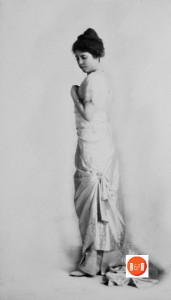
completion. It will be a very attractive building when finished. The lake is beginning to fill; the water was turned on last week.” The pavilion was often described as a casino locally, but it was not a gambling hall. It was used for band concerts, parties, dances, and receptions and could accommodate at least 300 people.
The Herald reported on Sept. 9, 1886 – “Mrs. Davis, the mother of Mrs. J.M. Cherry and Mrs. B.P. Alston, both of Rock Hill, lost two houses in Charleston on Tuesday night of last week by the fire which followed the great earthquake.”
Oakland held a grand opening on July 3 and July 4, 1891, with an auction of lots, an open house, band concerts at the pavilion, and a fireworks display. It is not clear how long Johnson was in Rock Hill, but he probably was working on the park during most of the
construction period. The 30-acre Oakland Park was open to all residents of Rock Hill, and “going out to Oakland” became a popular entertainment. Grand homes were built along Oakland Avenue, and lot sales continued for years. Oakland Park seemed to be comparable to many of the parks in street car suburbs in much larger cities. Unfortunately, it was not to last long. In 1895, the site of Oakland Park was sold to the state for $5 to accommodate the location of Winthrop Normal and Industrial School in Rock Hill. The main campus of Winthrop University now occupies the site of Oakland Park. From other sources, we know that when Governor Ben Tillman came to Rock Hill to decide on a location for Winthrop, the thing that impressed him the most was the beauty of the site and of the landscape in Oakland Park.

An early document showing the James Bynum was teaching at the original Rock Hill Academy in 1853. Courtesy of the White Family Collection – 2008
Joseph Forsyth Johnson continued to work on landscape design after his work in Rock Hill, but his career did not end well. When he came to America in 1885, he abandoned his wife and six children in England, and traveled with Frances Clarke, who was pregnant at the time and was listed on passenger lists as his wife. They had three children in America. Johnson eventually abandoned his American family and returned to England several times. He died in Brooklyn, New York in 1906 with so few assets that he was buried in an unmarked grave in Evergreen Cemetery. In recent years, his American and English families have discovered their common heritage. One of Johnson’s descendants in England is Sir Bruce Joseph Forsyth-Johnson, a noted British television personality born in 1928. Sir Bruce has been featured in game shows, interview shows, and reality shows since 1957, and is one of the best-known British entertainment personalities. A few years ago, he appeared on a show titled “Do You Know Who You Are?” where he learned of the dual families of his ancestor in front of a television audience. Sir Bruce has had a large monument placed at the grave of Joseph Forsyth Johnson.
The YV Enquirer reported on April 10, 1895 – “Mr. S.K. McDonald of Winnsboro has moved to Rock Hill. He and his family are occupying the Cherry residence on Oakland Avenue.”
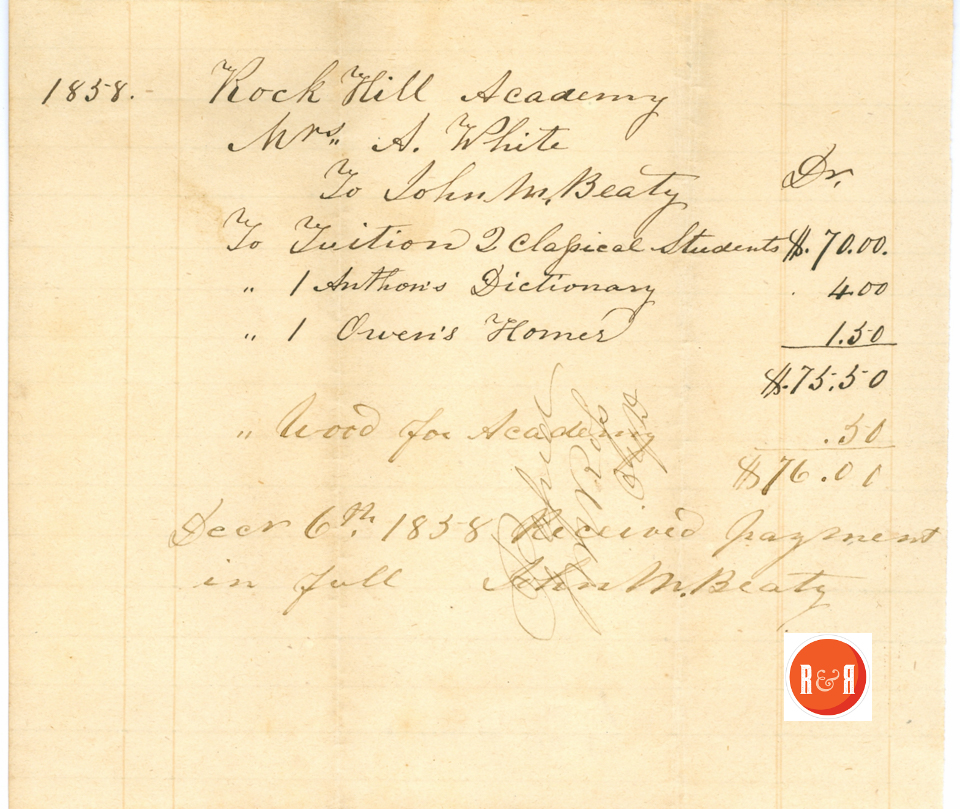
John M. Beaty was also associated with the Rock Hill Academy but is not known to be associated with the Cherry – Bynum – Beaty family. Courtesy of the White Family Collection – 2008

A rarely seen view of James Milton Cherry of Rock Hill, S.C. Image courtesy of the Bailey Collection
Contributed and written by Paul M. Gettys
On May 27, 1896 the Herald reported – “The Spratt Machine Co. of Fort Mill has awarded the contract for the residence of Mr. S.T. Frew on Hampton Street. From the plans it will be one of the handsomest in the city.” The Herald reported the same day, “Ms. Norma Bonniwell, a skillful architectural designer of Hickory N.C., visited the family of Mr. S.T. Frew last week. She has furnished the designs for Mr. Frew’s new house, and is figuring with J.M. Cherry and W.J. Roddey, who are thinking of building.”
The Herald reported on Aug 7, 1897 – “That Mr. Hugh E. White, formerly of Fort Mill, now a prominent young architect in Atlanta has been given the contract for a $3,500. residence for J.M. Cherry. It is to be built in Oakland adjoining the home of W.J. Roddey.”
This home was designed by Rock Hill Architect, Hugh Edward White (1869 – 1939), born in Fort Mill, S.C. he attended Fort Mill Academy and started his practice in about 1894. Remained in Rock Hill until about 1903 and later returned to work. In the 1890’s he worked in an architectural firm in Atlanta. Between 1903-1918 he was a field supervisor of the Supt. Architect Dept. of the Treasury. For about three years 1918-21, he was employed with Charles Coker Wilson in Columbia or Gastonia, N.C.
The Herald reported on Aug. 13, 1897 -“That a new eight room house in Oakland is being built for J.M. Cherry.”
The Rock Hill Journal on June 12, 1901 – “J. B. Martin of Hickory Grove, S.C. has the contract for moving two houses on Wilson Street across the street and remodeling them and also for two new five room cottages on Wilson Street.” J. G. Anderson and J. M. Cherry are making these improvements.
The Herald reported on Aug 10, 1901 – “That W. C. Whitner has completed a survey of the lower road, from the state farm, to the county bridge over the Catawba River. The distance in 4.5 miles and the road is perfectly straight.” (The map shown in the More Information link is believed to be the result of this survey.)
The Herald reported on Aug. 16, 1902 – “That a recent storm resulted in damage to the home of W. J. Cherry. The roof was struck by lightning.”
The Record reported on April 1, 1907 – “A committee of City Council led by J. M. Cherry has contracted with Soloman – Norcross Co of Atlanta to develop specification for a sewage system for Rock Hill.”
The RH Record reported on June 13, 1907 – “There has been as serious fire at the home of Mr. J.M. Cherry. The fire started in the garret and the upper portion of the home is heavily damaged.” The paper also stated on June 27, 1907 that Mr. and Mrs. J.M. Cherry are occupying the old James S. White residence on White Street since their misfortune of burned out.”
The Rock Hill Record reported on Sept. 9, 1907 – “Mr. J. M. Cherry has purchased all the land between his plantation and the river. And he has surveyed a road from his elegant farm to the river. This is a straight road and will pave it and will be convenient for that area as well as Fort Mill. The road will strike the river at Jones Ferry.”
The RH Record of July 8, 1909 – “Mr. Burt Massey lost his automobile to fire. He and Mr. Will McFadden were filling the tank of the machine with gasoline with a lamp sitting nearby for light. The vapor ignited, burning both men and destroying the machine. This occurred on Oakland Ave., near the home of Mr. J.M. Cherry.”
The Rock Hill Herald contained an ad on Dec. 8, 1918 in which J.M. Cherry announced in 1919, he will sell his farm between Rock Hill and the Catawba River. A concrete road is now being built through the center of this property, four and one-quarter miles in length. The property will have rights to city water.
July 8, 1920 the Fort Mill Times ran an article on an auction sale held one this date, of the Cherry Plantation between Winthrop College and the Catawba River.” It is understood that the entire track was recently sold by J. M. Cherry and the new owners have divided the track into small farms. The land extends along the concrete and macadam road for a distance of about four miles and is in a high state of cultivation.” The following day, the Herald of July 9, 1920 reported, “The auction sale of the Cherry property was the biggest auction in Rock Hill history. Nine hundred acres were sold and the total proceeds was between $250,000. – $300,000. Mr. Cherry retains 500 acres between the concrete road and the College Farm road, including what is known as the Cherry Park. Mr. Major of Anderson S.C. retains about 150 acres on this end of the farm, on the left side of the concrete road. About 1,000 people were on hand during the day. Prices ranged from $275.00 – $400.00 and all the parcels sold front the concrete road and are good for agricultural of suburban development. John Pruitt of Anderson Co., purchased several tracts. He is one of the biggest cotton growers in the state. Mr. Pat W. Major who is from Anderson, as well, bought the dairy farm.
Click on the More Information > link found below in the picture column, for additional data on the land owned by J. M. Cherry and the Rock Hill Town and Land Company. Click on Laurelwood Cemetery Tours for his grave site. Or click HOME to be returned to the Oakland Tour.
Stay Connected
Explore history, houses, and stories across S.C. Your membership provides you with updates on regional topics, information on historic research, preservation, and monthly feature articles. But remember R&R wants to hear from you and assist in preserving your own family genealogy and memorabilia.
Visit the Southern Queries – Forum to receive assistance in answering questions, discuss genealogy, and enjoy exploring preservation topics with other members. Also listed are several history and genealogical researchers for hire.
User comments welcome — post at the bottom of this page.
Please enjoy this structure and all those listed in Roots and Recall. But remember each is private property. So view them from a distance or from a public area such as the sidewalk or public road.
Do you have information to share and preserve? Family, school, church, or other older photos and stories are welcome. Send them digitally through the “Share Your Story” link, so they too might be posted on Roots and Recall.
User comments always welcome - please post at the bottom of this page.


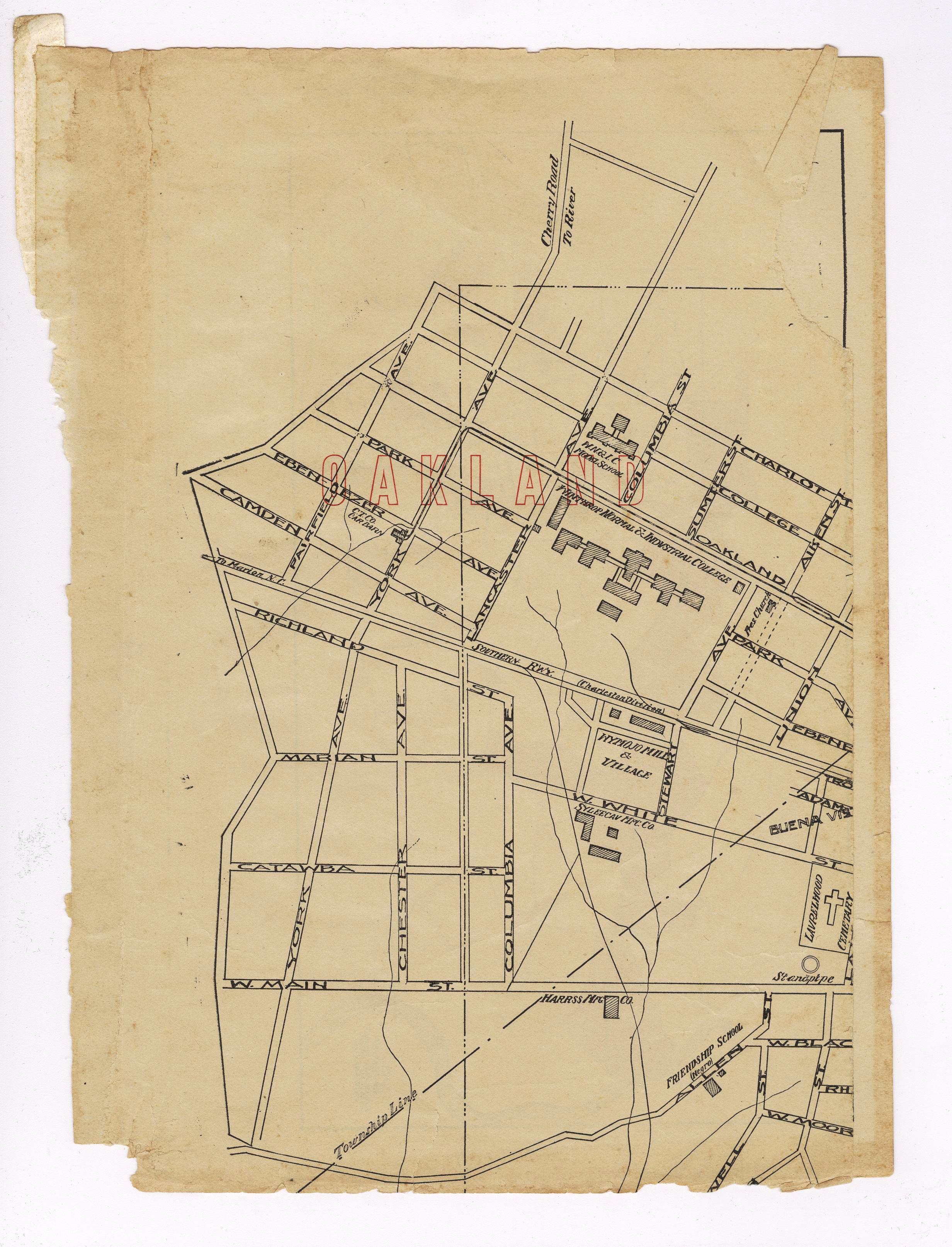
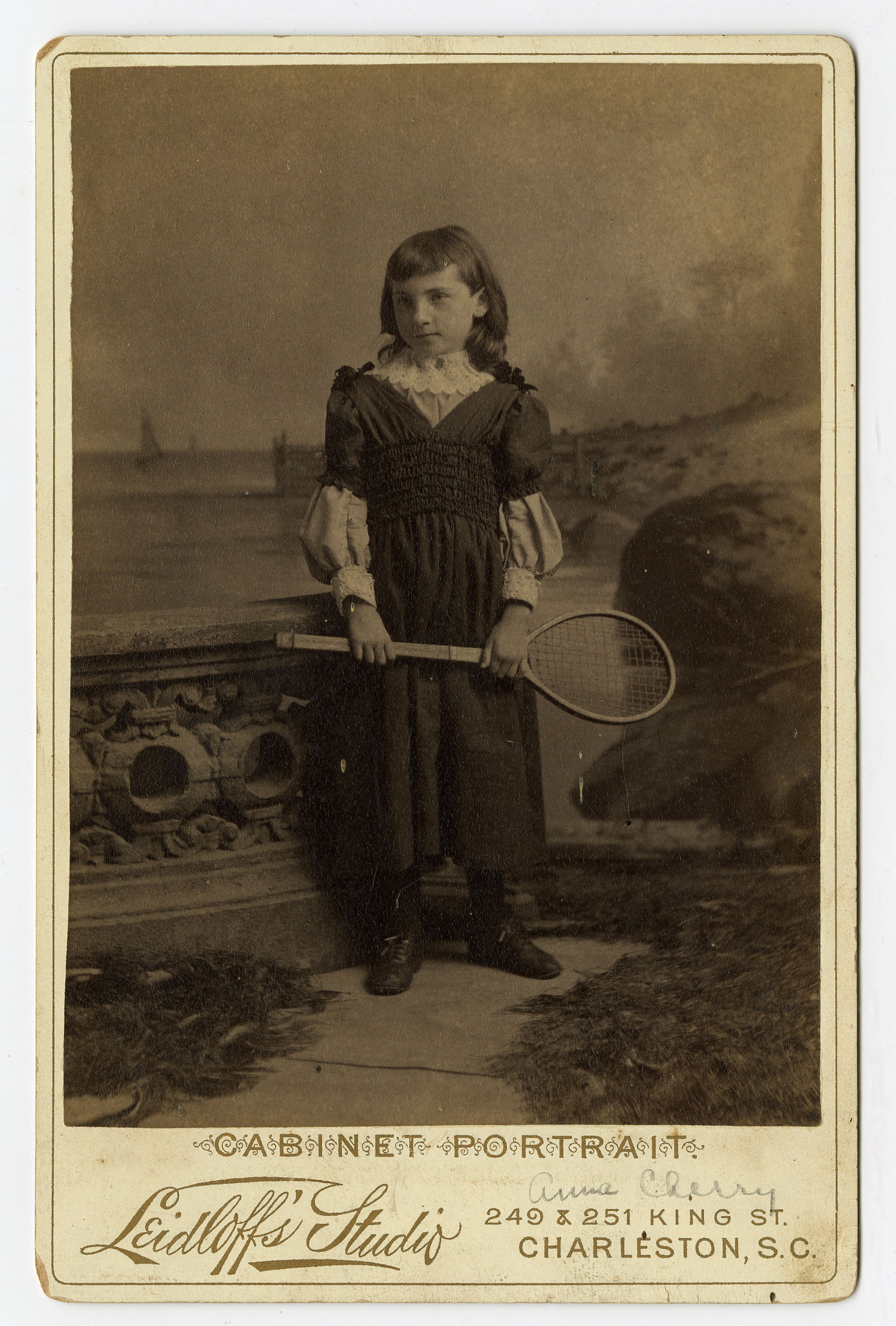
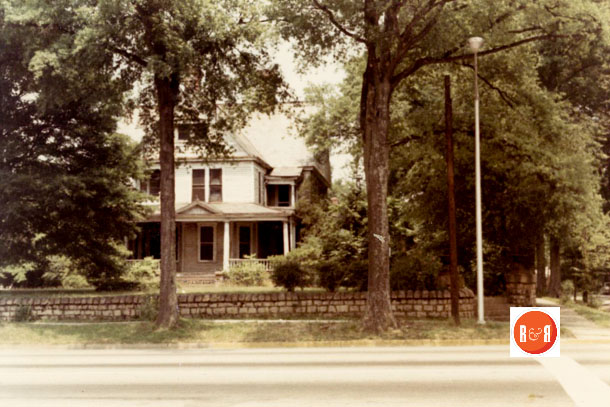

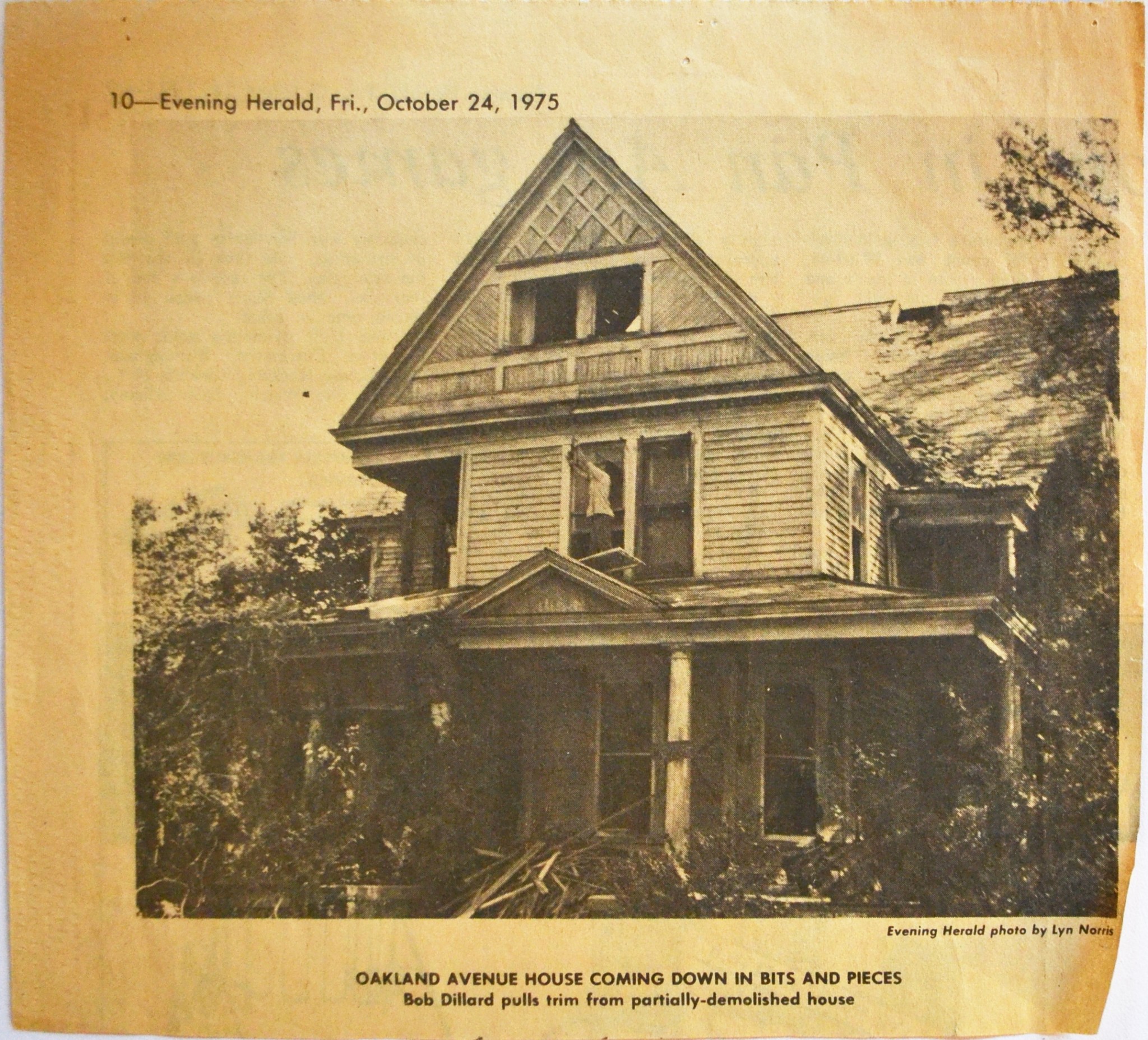





I found this entry to be very interesting. I remember the the home well and thank you for the work on preserving the data on the Cherry-Bynum house. I was sorry to see it torn down!